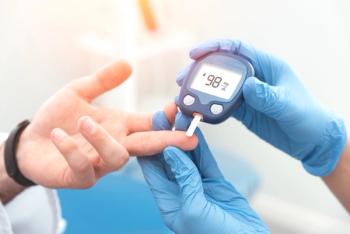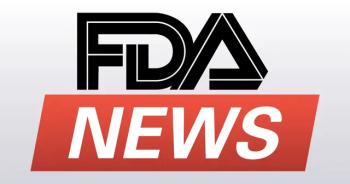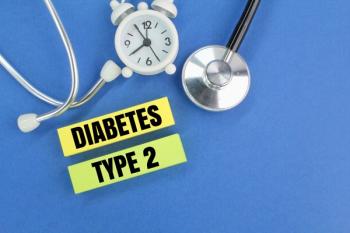
Verapamil partially preserves beta cell function in children with newly diagnosed type 1 diabetes
According to the study, maintaining modest residual beta cell function in newly diagnosed patients is associated with a lower risk of vascular complications and hypoglycemia.
A once-daily oral dose of verapamil partially preserves C-peptide levels (a measure of pancreatic beta cell function) in children and adolescents with newly diagnosed type 1 diabetes, according to a study published in JAMA.
The destruction of insulin-producing pancreatic beta cells is a byproduct of type 1 diabetes, affecting over 1 million people in the United States. Maintaining even modest residual beta cell function (assessed by stimulated C-peptide secretion) in newly diagnosed type 1 diabetes patients is associated with lower risk of diabetes-related vascular complications and hypoglycemia, according to study authors.
To evaluate the efficacy and safety of verapamil in preserving beta cell function, a double-blind, placebo-controlled, randomized clinical trial (NCT04233034) was conducted in 88 children and adolescents aged 7 to 17 years, who weighed 30 kg (66 lbs) or more, with newly diagnosed stage 3 (clinically apparent) type 1 diabetes.
Area under the curve (AUC) values for C-peptide levels, stimulated by a mixed-meal tolerance test at 52 weeks from diagnosis, was the primary outcome of the study. Participants had a mean age of 12.7 (SD, 2.4) years. Of the 88 participants, 36 were female (41%). The mean time from diagnosis to randomization was 24 (SD, 4) days.
Between July 20, 2020, and October 13, 2021, 88 patients were randomly assigned 1:1 to verapamil (n = 47) or placebo (n = 41), part of a factorial design in which they also were assigned to receive either intensive diabetes management or standard diabetes care. Follow-up was completed on September 15, 2022, with the trial completed by 44 of 47 (94%) participants in the verapamil group and 39 of 41 (95%) participants in the placebo group.
The mean C-peptide AUC was 0.66 pmol/mL at baseline and 0.65 pmol/mL at 52 weeks in the verapamil group. Mean C-peptide AUC was 0.60 pmol/mL at baseline and 0.44 pmol/mL at 52 weeks in the placebo group, resulting in a 30% higher C-peptide level at 52 weeks with verapamil (adjusted between-group difference, 0.14 pmol/mL [95% CI, 0.01 to 0.27 pmol/mL]; P= .04). The mean AUC increased from baseline in both groups for 13 weeks before declining in the placebo group. The mean AUC was stable in the verapamil group through 26 weeks before declining.
Peak C-peptide levels and the proportion with a peak C-peptide level of 0.2 pmol/mL or greater and hemoglobin A1c levels were 2 of 3 secondary outcomes. The final secondary outcome was mean glucose concentration and percentage of time with glucose concentration between the range of 70 to 180 mg/dL or 70 to 140 mg/dL and percentage of time with a glucose concentration greater than 180 mg/dL, greater than 250 mg/dL, less than 70 mg/dL, or less than 54 mg/dL. Severe hypoglycemia and diabetic ketoacidosis were safety outcomes.
Forty-one of 43 (95%) participants in the verapamil group had a 52-week peak C-peptide level of 0.2 pmol/mL or greater, compared to 27 of 38 (71%) participants in the placebo group. Hemoglobin A1c was 6.6% in the verapamil group compared to 6.9% in the placebo group at 52 weeks (adjusted between-group difference, −0.3% [95% CI, −1.0% to 0.4%]).
Dosing of the extended-release formulation of verapamil used in the study was based on the participants’ weight, starting at 60 mg/d or 120 mg/d. Dosage was escalated at 2-to-4-week intervals to a maximum of 360 mg/d for those weighing more than 50 kg (110 lbs). Dosing was held, decreased, or discontinued if adverse events occurred. Safety visits were conducted approximately 1 week after initiation of the study drug and after dose increases.
The study drug was discontinued due to presumed adverse drug events by 3 participants in the verapamil group and 1 in the placebo group, while 2 participants in the verapamil group discontinued for other reasons, in addition to the 5 participants that dropped from the trial.
In the verapamil group, 39 (83%) participants experienced 134 adverse events while 30 (73%) participants in the placebo group experienced 91 adverse events. Severe hypoglycemia occurred 1 time in each group. Diabetic ketoacidosis occurred 1 time in the placebo group. A nonserious adverse event considered to be related to treatment occurred in 8 participants in the verapamil group (17%) and in the placebo group (20%), respectively. In each group, 3 participants experienced other serious adverse events not considered to be related to treatment.
Three limitations were present in the trial. Only children who weighed 30 kg (66 lbs) or more were included due to commercially available dosing options for extended-release verapamil. According to authors, the original enrollment goal was not met due to challenges during the COVID-19 pandemic. Lastly, the authors state the sample size was small for assessing adverse events of treatment.
Verapamil partially preserved stimulated C-peptide secretion 52 weeks after diagnosis compared to placebo, but further studies are required to determine durability of C-peptide improvement and optimal length of therapy, according to the study’s authors.
Reference
Forlenza GP, McVean J, Beck RW, et al. Effect of verapamil on pancreatic beta cell function in newly diagnosed pediatric type 1 diabetes: a randomized clinical trial. JAMA. 2023;329(12):990-999. doi:10.1001/jama.2023.2064
Newsletter
Access practical, evidence-based guidance to support better care for our youngest patients. Join our email list for the latest clinical updates.













